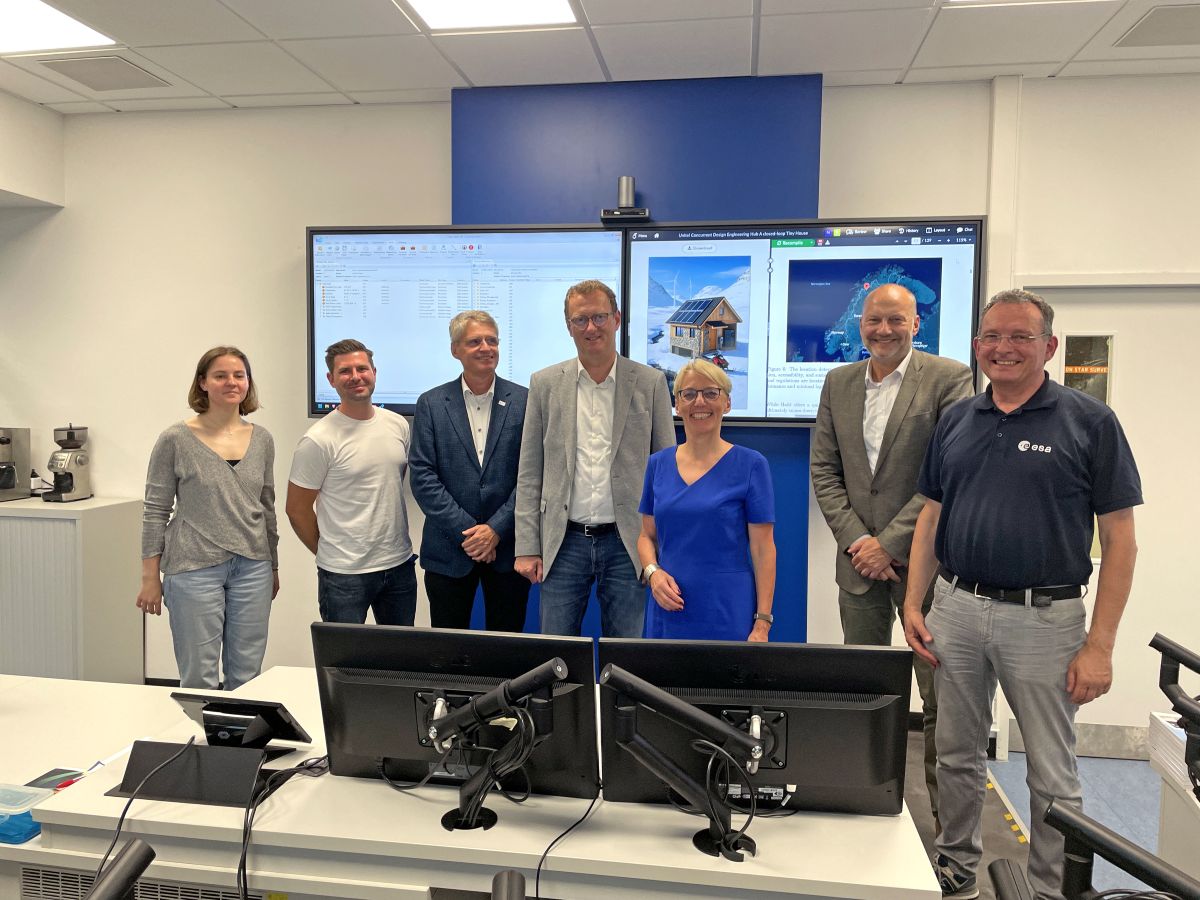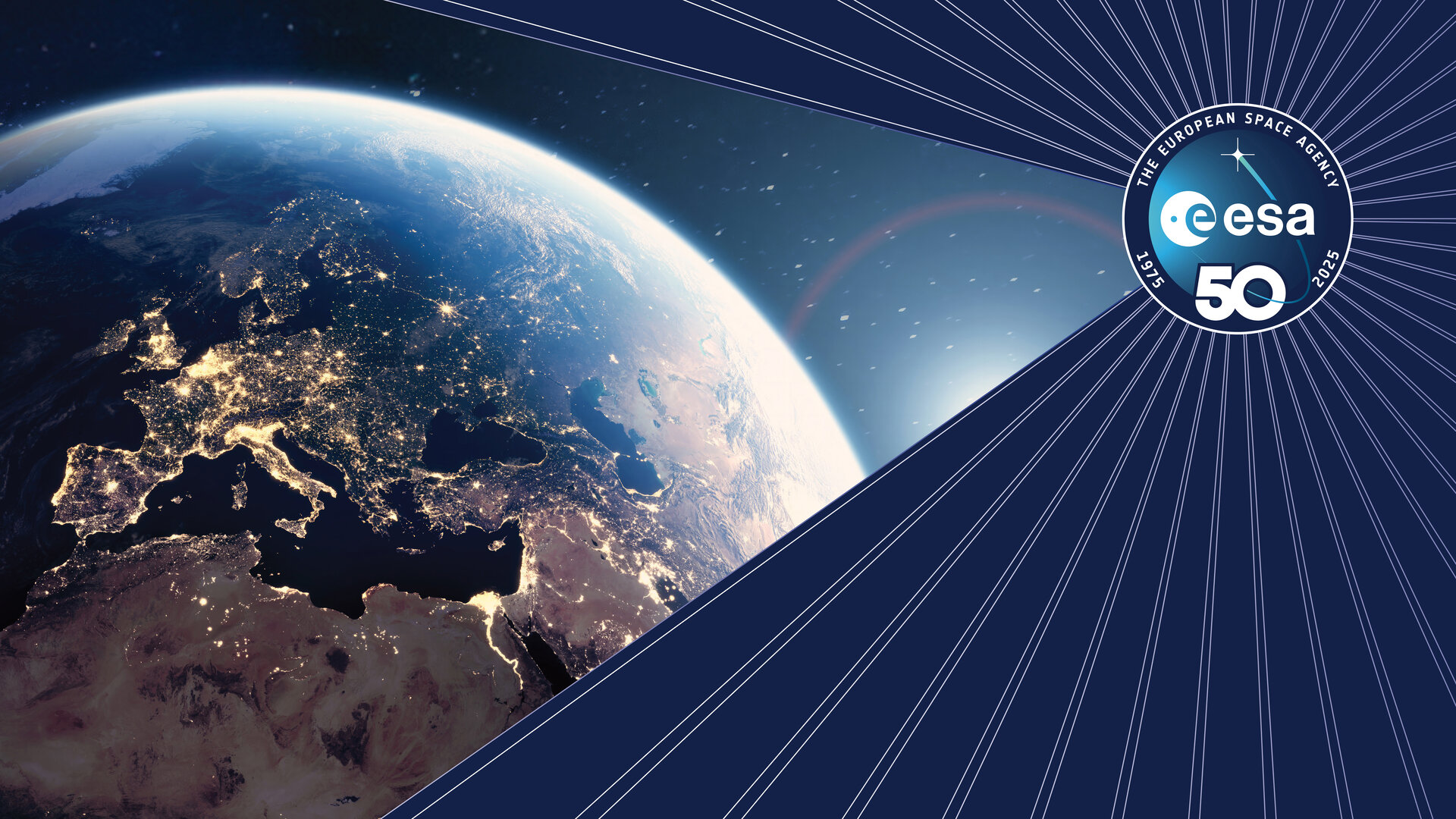Europe’s asteroid watchdog turns ten
It’s been ten years since the inauguration of the ESA Near-Earth Object Coordination Centre (NEOCC) on 22 May 2013. In that time, the NEOCC consolidated efforts across Europe to detect asteroid threats and help mitigate them – with great impact.
“The NEOCC represents a significant step forward in the involvement of ESA in Planetary Defence activities. The Centre has consolidated itself as a trustworthy source of information about near-Earth objects and the threat that they represent to Earth”, says Richard Moissl, Planetary Defence Officer at ESA.
The NEOCC has an incredible team of scientists and engineers observing newly discovered NEOs, determining the most meticulous and accurate trajectories for them and calculating the chances of any collisions with Earth. They also operate the popular NEOCC web portal, where ESA shares all this information with the Planetary Defence community and interested individuals.
Chelyabinsk: making the point for all to see
Only months before the NEOCC inauguration, in February 2013, the world’s attention is caught by the Chelyabinsk event.
An undetected asteroid of 17-20 metres in diameter strikes the Earth’s atmosphere and an aerial explosion takes place at about 30 kilometres altitude over the Russian city Chelyabinsk. When the shock wave reaches the ground a few minutes later, it shatters a multitude of windows and roofs. Some 1500 people had to be treated with varying degrees of seriousness.
Dashcams and other cameras record the event and images quickly travel the world, making the Chelyabinsk event a turning point in society's perception of the risk posed by near-Earth objects (NEOs).
“Chelyabinsk opened many eyes to the importance of NEO threat assessment efforts,” says Juan Luis Cano, Planetary Defence Information Provision Coordinator. “But the international and scientific community had been hard at work for many years. Asteroid detection capabilities had been growing rapidly and monitoring systems had been in place since the turn of the century on both sides of the Atlantic.”
Streamlining NEO-related efforts
Mathematician and astronomer Andrea Milani, professor of mathematics at the University of Pisa, led the creation of the first automated system to compute the probabilities that an asteroid could impact the Earth in the future. The NEODyS service of the University of Pisa was first released in 1999 and has continuously been in use and improved upon since.
Although the systematic collision risk assessment was very successful, it was disconnected from other tools and institutions.Searching for near-Earth objects (NEOs) and evaluating collision risks required the capability for quick verification and collaboration. Also, in case a possible threat should be determined, next steps needed to be in place to respond timely and adequately.
To better address this need to connect and coordinate efforts and tools from multiple organisations and institutions, in 2013 ESA created the NEO Coordination Centre (NEOCC) based at the Agency’s ESRIN centre in Frascati, Italy.

ESA’s ESRIN facility in Frascati, Italy houses the NEO Coordination Centre
Watch, assess and repeat
Ever since, the NEOCC has been the central access point to a federated network of European asteroid data sources and information providers. The collected measurements of small bodies in the Solar System – such as asteroids, comets and even minor planets – are used every day to provide orbit determination, impact monitoring, data provision and risk analysis.
Together they provide data on the possible threat posed by any NEO that comes near Earth. If an asteroid is determined to be potentially dangerous, emergency response agencies across the globe are informed of impact risk and given support and advice from the NEOCC and other organisations.
The NEOCC is no island. It is itself part of the Planetary Defence Office (PDO) of ESA’s Space Safety Programme. The PDO takes an even wider approach and also drives space missions like HERA (to assess the impact of NASA’s DART), NEOMIR (to keep an eye on asteroids coming from the direction of the Sun) and others that aim to improve our capacity to respond effectively if a threat should come our way. The NEOCC and the PDO as a whole are also active participantss of international organisations like the International Asteroid Warning Network (IAWN) and the Space Mission Planning Advisory Group (SMPAG).
The NEOCC has also augmented the number of tools and their accessibility through their webportal in a steady stream.
NEOCC milestones
- May 2013 – Inauguration of the NEOCC at ESRIN (watch recording). This included the federation of several European NEO services like NEODyS data, EARN data, NEO chronology, NEO priority list and more.
- April 2015 – ESA and the NEOCC host the biennial 4th Planetary Defense Conference at ESRIN.
- Mid-2015 – Inauguration of the Test-Bed Telescope #1 in Cebreros, Spain. The Test-Bed telescope was established to demonstrate a number of technologies and procedures for NEO detection and tracking.
- Nov 2018 – Incorporation to the NEOCC of full orbit determination capabilities (previously provided by NEODyS), that made the in-house computation of very accurate asteroid orbits possible.
- Start of 2019 – Controlled automation of software releases for the suite of NEOCC tools.
- Nov 2020 – Incorporation to the NEOCC of full impact monitoring capabilities (previously provided by NEODyS), enabling the accurate calculation of the impact probabilities of threatening NEOs.
- March 2021 – NEOCC releases a new version of its web portal, started in 2012, including many NEO related services and improvements in usability.
- April 2021 – Inauguration of the Test-Bed Telescope #2 in La Silla, Chile.
- Oct 2021 – Inauguration of the new NEOCC premises at ESRIN.
- Sep 2022 – Release of the NEO Toolkit in the NEOCC web portal. It is now possible for anyone to look up near-Earth objects, to simulate their trajectories and plan precise observations.
- Feb 2023 – Internal release of the NEOCC Data Hub and Data Pipeline Orchestrator.
- May 2023 – 10th anniversary of the NEOCC.

Future automated telescope for nightly sky surveys nicknamed ‘Flyeye’
NEOCC 10 years and counting
Over the last ten years, the number of detected NEOs has been growing fast. At the time the NEOCC was inaugurated, slightly less than 10 000 NEOs had been discovered. In just 10 years, that number has multiplied by more than three, which means that during this period there have been twice as many discoveries as in the previous 100 years together! The orbits of all these objects are systematically determined and analysed at the NEOCC.
“We have many more plans and ideas in the pipeline to improve the detection and mitigation of asteroids and the risk they pose,” says Richard Moissl. “ESA’s Planetary Defence Office is fostering the development and will operate the Flyeye telescope, greatly increasing our detection capabilities. We’re also currently preparing for the NEOMIR mission, which will detect threatening asteroids coming from the direction of the Sun by detecting their emission in the infrared.”
The NEOCC can look forward to many more years of learning to understand and deal with the danger asteroids might pose, enabling Europe and beyond to be prepared to face any future threat from the vicinity of the Solar System.
We’re all safer because of their constant watch of the heavens.

The NEOCC team celebrating their 10-year anniversary with a visit to the Specola Vaticana in the Vatican



